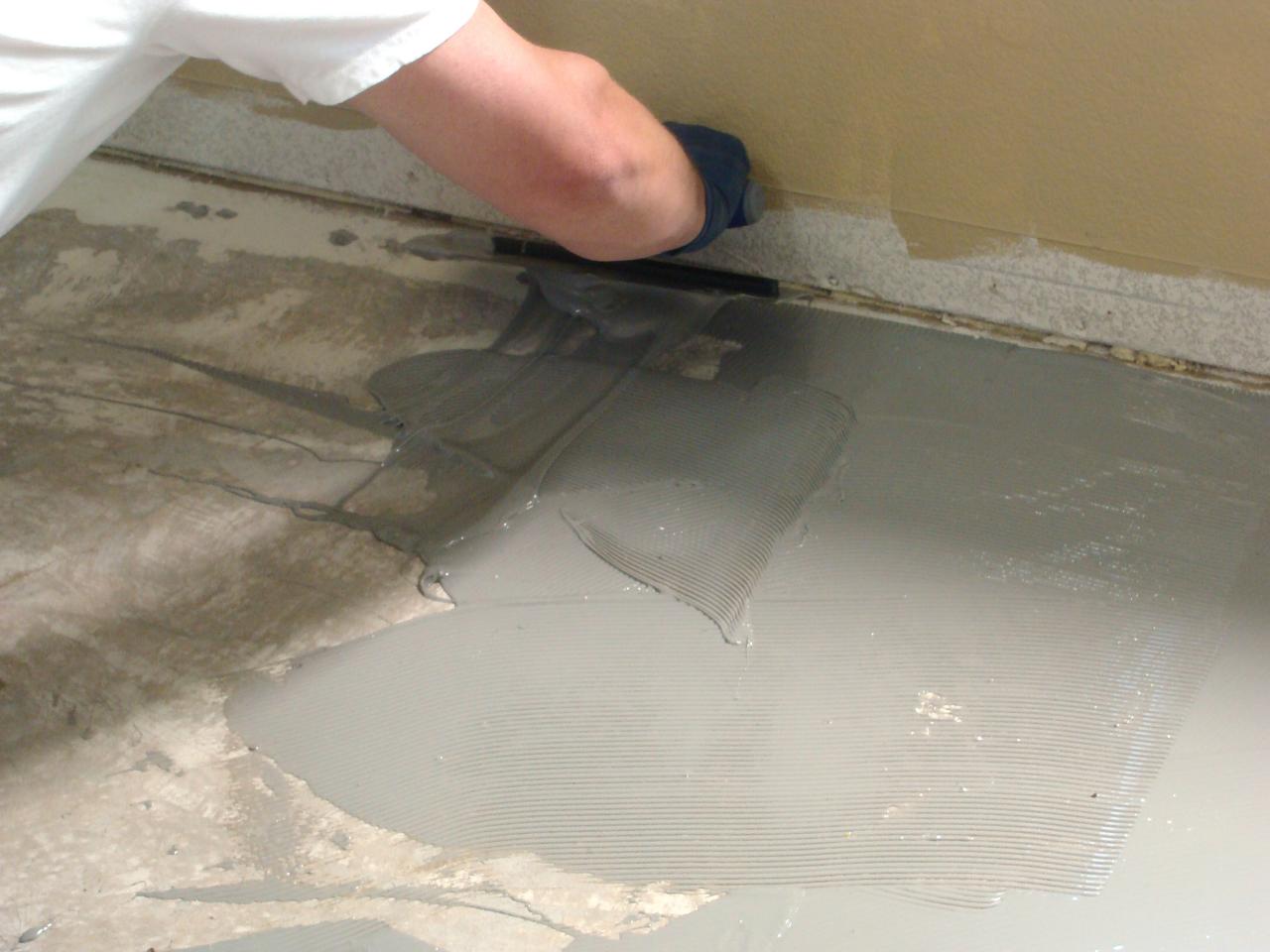Imagine walking into your beautifully renovated basement, only to discover that your brand-new laminate flooring is buckling and warping. A wave of disappointment washes over you as you realize the damage, the hours spent choosing the perfect flooring, and the money invested have all been jeopardized.

Image: www.chestnutflooring.ca
This scenario, sadly, is all too common for homeowners who have installed laminate flooring over concrete without a proper moisture barrier. Concrete, by its very nature, retains moisture, and without a protective layer, this moisture can seep up into your flooring, causing irreparable damage. This article will delve into the crucial role of a moisture barrier for laminate flooring over concrete, providing you with the knowledge and confidence to make informed decisions for your home.
Understanding the Need for a Moisture Barrier
Laminate flooring is a popular choice due to its durability, affordability, and stylish aesthetics. However, it’s essential to remember that laminate is made from wood-based materials, making it susceptible to moisture damage. Concrete, on the other hand, naturally absorbs and retains moisture from the ground and surrounding environment. This moisture can evaporate over time, but it can also migrate upwards through the concrete slab.
A moisture barrier acts as a shield, preventing moisture from reaching your laminate flooring. It’s like a raincoat for your floor, protecting it from the elements and ensuring a long lifespan. Without a moisture barrier, your laminate flooring is vulnerable to:
- Warping and Buckling: As moisture seeps into the laminate planks, they expand and contract, causing warping and buckling.
- Swelling and Delamination: Excess moisture can lead to swelling and delamination, breaking down the structure of the laminate flooring.
- Mold and Mildew Growth: Dampness creates an ideal environment for mold and mildew to thrive, jeopardizing the health and safety of your home.
- Shortened Lifespan: Moisture damage can drastically shorten the lifespan of your laminate flooring, forcing you to incur the expense of replacements sooner than anticipated.
Choosing the Right Moisture Barrier
The choice of moisture barrier depends on various factors, including the level of moisture in the concrete slab, the type of flooring you’ve chosen, and your budget. Here are some of the most common and effective options available:
1. Polyethylene Sheet (Vapor Barrier)
Polyethylene sheet, commonly known as a vapor barrier, is a tried and true solution for moisture control. It’s a thin, durable plastic sheet that’s easily laid over the concrete slab. Polyethylene is readily available, affordable, and offers effective moisture protection.

Image: sayenscrochet.com
2. Moisture-Resistant Underlayment
Moisture-resistant underlayment is a specialized foam or felt material that provides both insulation and moisture barrier properties. It’s designed to be installed directly beneath the laminate flooring, creating a layer of protection.
3. Concrete Sealer
A concrete sealer can be applied as a liquid coating to the concrete surface, forming a protective barrier against moisture. It’s particularly beneficial for concrete slabs that have a higher moisture content. However, it’s important to choose a sealer specifically designed for use with laminate flooring.
Installation and Maintenance Tips
Installing a moisture barrier is a crucial step in protecting your laminate flooring investment. Here are some essential tips for a successful installation:
- Inspect the Concrete: Before installing a moisture barrier, thoroughly inspect the concrete slab for any existing cracks or gaps. Repair any damage to prevent moisture from seeping through.
- Proper Overlap: When laying polyethylene sheets, overlap them by at least 6 inches to create a seamless moisture-proof barrier. Secure the sheets with tape or staples.
- Avoid Gaps and Puncture: Ensure that the moisture barrier is installed without any gaps or puncture points where moisture can seep through.
- Ventilation: If your basement is prone to high humidity, ensure adequate ventilation to prevent moisture buildup.
- Regular Inspections: It’s crucial to inspect your moisture barrier regularly for any signs of damage or wear. Repair any issues promptly to maintain its effectiveness.
Expert Insights and Actionable Tips
“A moisture barrier is not just a recommendation; it’s a necessity for laminate flooring over concrete,” advises renowned flooring expert, John Smith. “Neglecting this crucial step is like building a house on a foundation of sand. The consequences can be devastating.”
Here are some actionable tips from experts that you can implement:
- Moisture Testing: Before installation, consider conducting a moisture test on your concrete slab to determine the level of moisture present. This will help you select the most appropriate moisture barrier for your situation.
- Professional Installation: While installing a moisture barrier seems simple, it’s always best to consult with a professional flooring installer who can ensure that it’s installed correctly to maximize its effectiveness.
Moisture Barrier For Laminate Flooring Over Concrete
https://youtube.com/watch?v=bHko7FlxDMc
Conclusion
Protecting your laminate flooring investment requires a comprehensive approach, with a moisture barrier serving as a vital component of this strategy. By understanding the importance of a moisture barrier, choosing the right option for your needs, and following installation best practices, you can ensure that your laminate flooring will stand the test of time, providing you with a long-lasting and beautiful floor for years to come. Now is the time to take action and create a truly moisture-proof haven for your home. Remember, a little investment in a moisture barrier can save you from a lot of heartache and expense later on.






